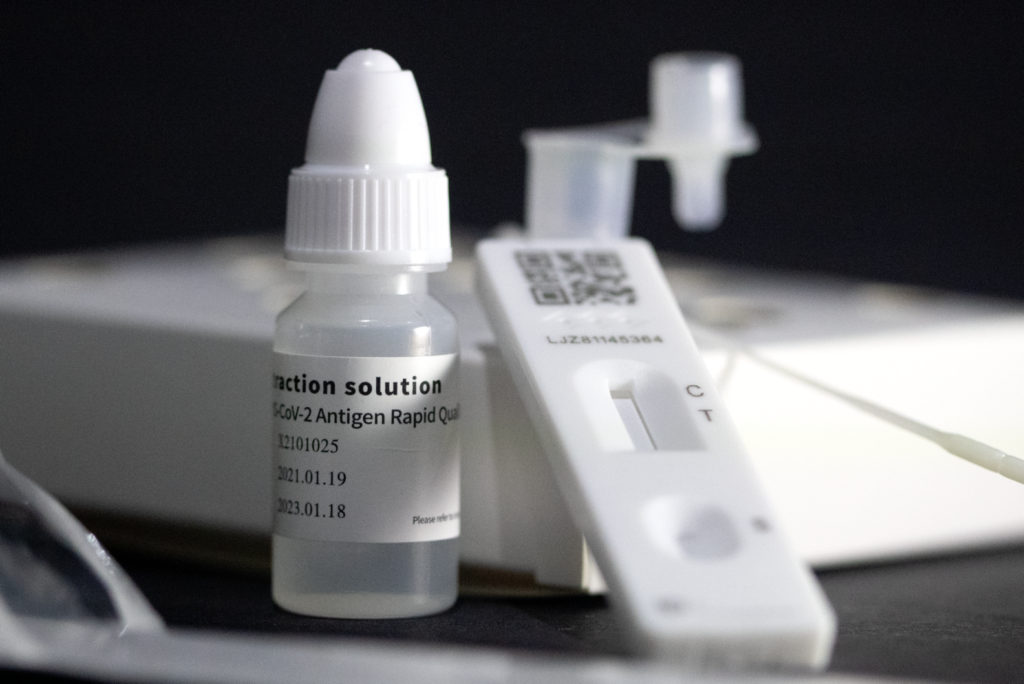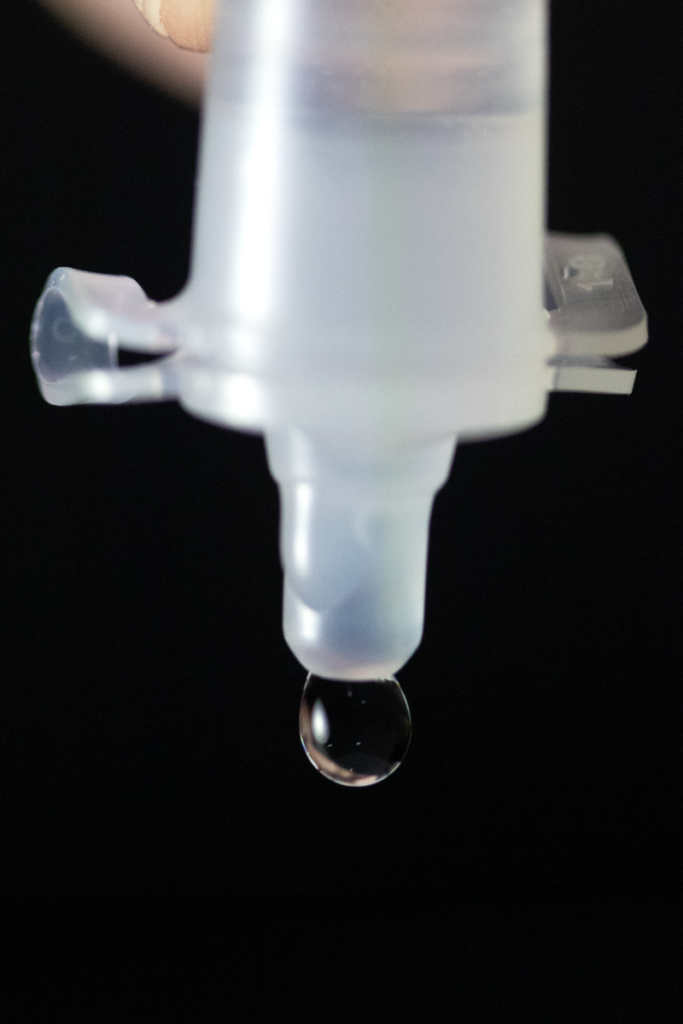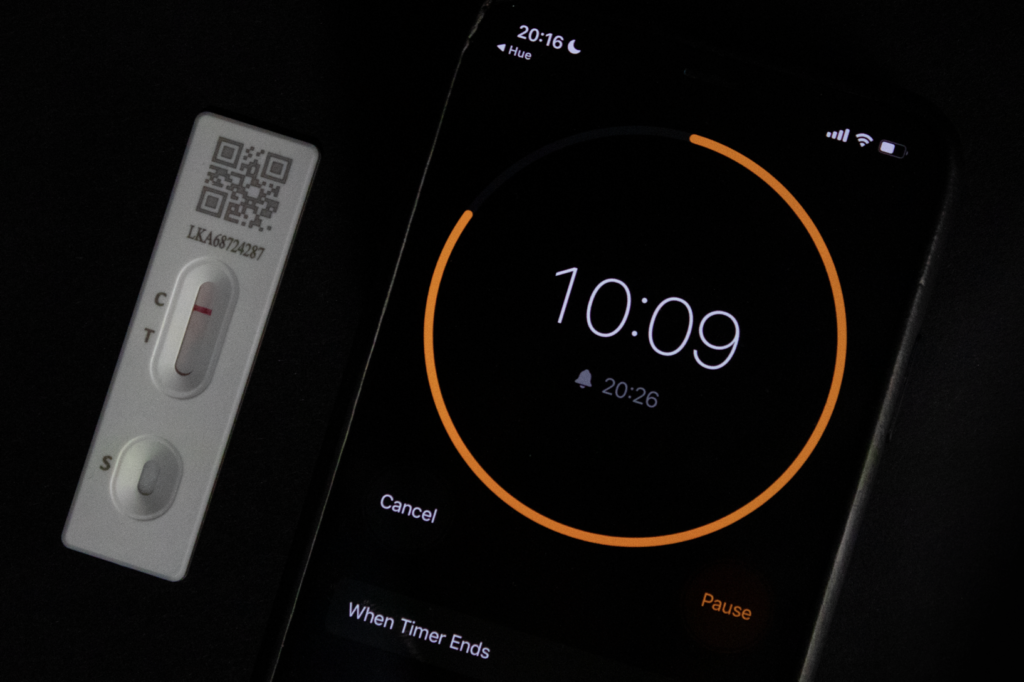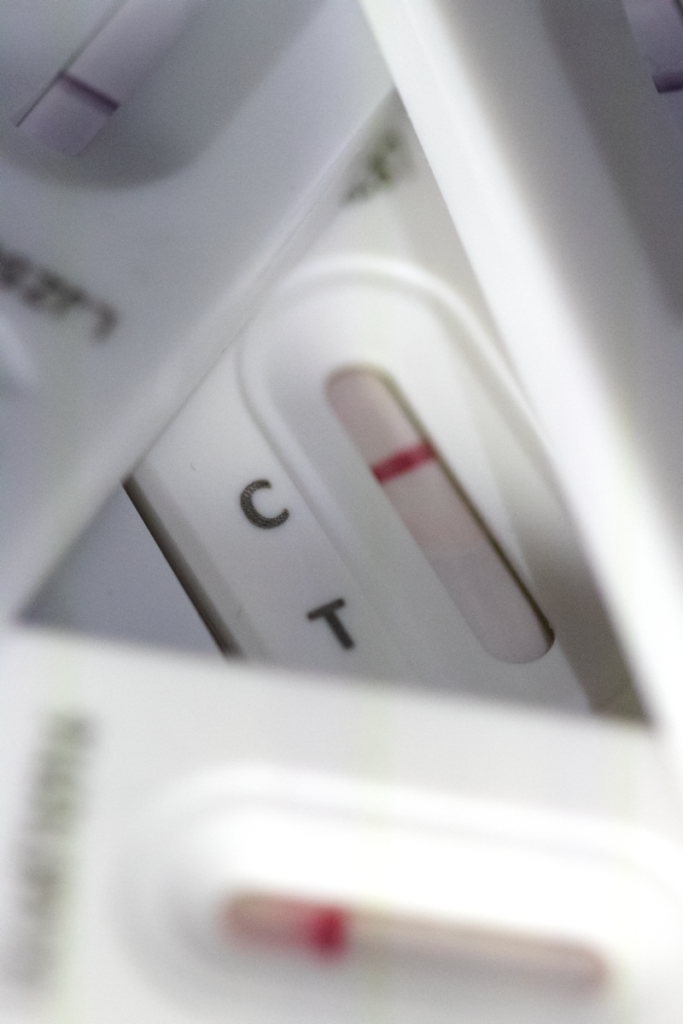The project title suggests a theme of images that when we look back at them we will think that it was unusual but familiar. I took upon myself to photograph COVID-19 testing kits, as I thought it fitted the theme well. It fits the theme well as COVID-19 came out of nowhere and we all got used to it and regularly testing ourselves. Most people are required to take daily tests for work or eduction, therefore it is “strangely familiar”.
I planned to collate a set of 5 images that shows the process in chronological order, showing how the lateral flow tests are used.

Image 1: The Setup. I setup the objects that are in the lateral flow boxes, and placed the two main elements in the centre, the solution and the test strip. I created a focus in the centre of the image by using a shallow depth of field, doing this allowed me to have the information on the bottle label and test strip in focus and sharp. I used a 1 point light setup with a white light on the right to cast shadow which makes the image more dynamic.

Image 2: Droplet. I used a macro lens to capture a droplet at the end of the the pipit. Originally, I was going to try and capture the droplet mid-air, which demonstrates motion. However, I wasn’t able to capture it as clear as I wanted to, as the shutter speed was too slow, otherwise there would have been a lot of noise. I shot on a black background, which I made from a black piece of card. It contrasts the shape of the droplet, and makes it stand out when it’s under the light. I also used a 1 point light setup, however I positioned it on the left this time, as the person holding the pipit was on the right.

Image 3: “Apply 2 Drops”. I used the same techniques and setup as image 2, although I changed the composition, as I wanted to include the test strip in the photo. It shows the part where you add two drops of the testing solution to the test strip. This is my favourite image from the project. The white on a black background works well as it creates a contrast, the black background can be seen in the water droplet, which helps define the shape of it and makes it more noticeable.

Image 4: Wait. This stage happens after you apply the solution to the test strip, and have to wait 15 minutes to see the result. I used one light source in this photo, and it was positioned low to the desk, as it created an outline on the edges of the phone, which adds depth and define the basic shape of the phone. However, the test strip is still well lit, and visible. The black and orange colour scheme, which dominates most of the image works well as it adds a “punch” of colour to the image and contrasts the white test strip.

Image 5: The Result. I collected used test strips and created a frame around one of the negative results. I think this composition works really well as it has a lot of geometric shapes. Firstly, there’s an oval shape where you read the result that is being framed by a triangle, which is contained in the images rectangular aspect ratio. The shallow depth of field really helps shift the focus to the middle of the image where the result is, which is the important part of the whole testing process.
Evaluation: Overall I think this project really fits the title, “strangely familiar” and it has produced some strong images, which shows the unusual process that has became a daily requirement for some people, to protect them and others against COVID-19.
